Lunt 130 mm Universal Telescope
From: $8,250.00
The Lunt 130 mm Universal telescope is THE complete telescope. This refractor-based system has a precision-aligned triplet ED lens with a 130 mm aperture, for truly stunning daytime and nighttime applications.
The Lunt 130 mm easily switches from Hydrogen Alpha configuration to its nighttime mode with the quick and easy removal of its internal module. With the Lunt 130 mm Universal Day and Night Telescope by your side, you wont need anything else!
Includes:
- Lunt 130 mm Universal Day & Night OTA
- Ring set assembly (with dovetail & Red Dot Sun Finder handle)
- Hard case with custom foam insert.
View a chart of Required Equipment by Viewing Type.
*Shown above with Starlight Instruments Feather Touch Focuser, not included with default purchase. The Lunt 130 mm Telescope comes standard with Rack & Pinion focuser.
Please choose options (those marked * are required):
Description
The Lunt 130mm Universal Telescope offers the ultimate in viewing, containing a precision-aligned triplet ED Lens with a 130mm aperture that allows you to delve into the Sun’s stunning features or take a trip through the night sky.
Hot spots, prominences and more explode into view as you tune using the hydrogen alpha module — and the night sky will never feel closer to Earth once the stars come out. This stunning lens will take you on a trip through the cosmos!
Lunt 130 mm Telescope Specifications
- Telescope Type: Universal Day and Night
- Universal Capabilities: H-alpha, CaK, White Light, Lunar, Planetary, Deep Space, Terrestrial.
- Aperture: 130 mm
- Objective Type: Professional Grade APO Triplet
- Objective Material: FLP51
- Objective Coating: Ion Assist Broadband AR
- Focal Ratio: F/7
- Focal Length: 910 mm
- Focuser Options: Dual Speed Lunt Crayford, Dual Speed Rack and Pinion, or Dual Speed Feather Touch
- Mounting: CNC Mounting Rings and Vixen Style Dovetail
- Storage: Aluminum Finished Hard Case with Fitted Foam
- H-alpha Etalon Type: Modular
- Etalon Wavelength: 656.28 nm
- Etalon Bandpass: <0.65 Å Single Stack, <0.45 Å Double Stack
- Telescope Weight: 25lbs
- Etalon Material: UV Grade Fused Silica
- Etalon Tuning: Doppler True Barometric Pressure Tuning
- Doppler Shifting: Instant
- Blocking Filter Size: 12 mm, 18 mm, 34 mm, Diagonal and Straight Through
- Blocking Filter Bandpass: 6 Å
- Sun Finder: Red Dot Sun Finder Handle
- CaK*Filter Type: Rear Mount CaK Module
- Filter Wavelength: 393.4 nm
- Filter Bandpass: 2.2 Å
- White Light*Filter Type: Front Mount Film Filter, Rear Mount White Light Wedge
- Filter Bandpass: Broadband White Light. AR/UV Blocking
- Lunar, Planetary, Deep Space, Terrestrial: Converts to a conventional professional grade APO triplet for all your nighttime requirements. See optional equipment for additional specifications.
- Theoretical Max Magnification: 225 x
*Optional Capabilities
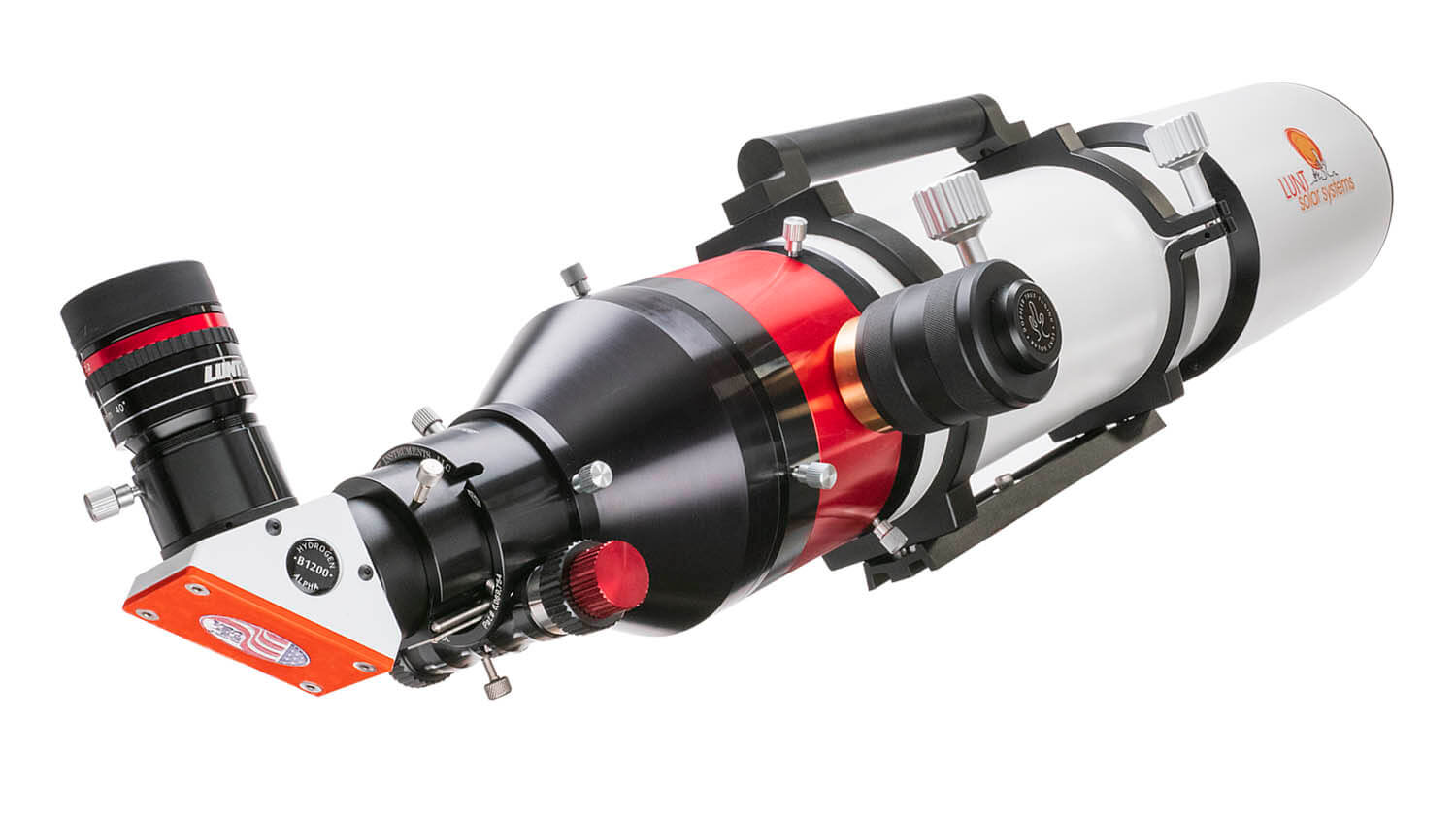
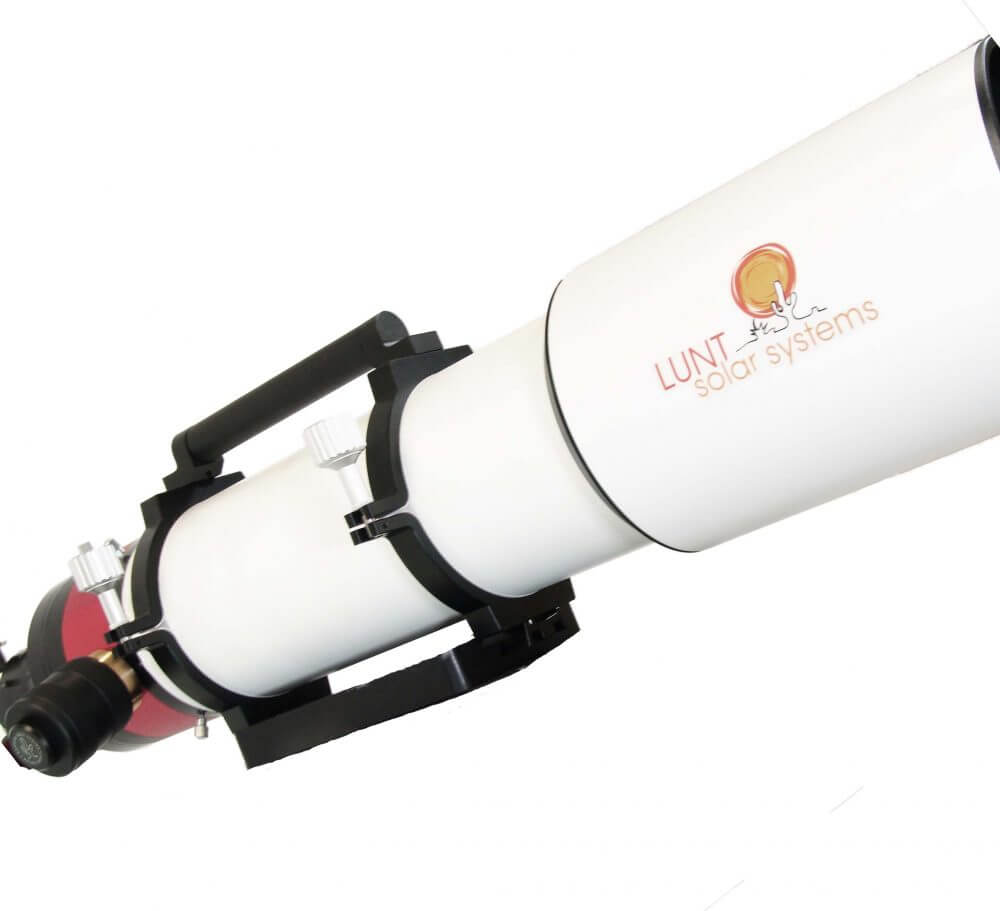
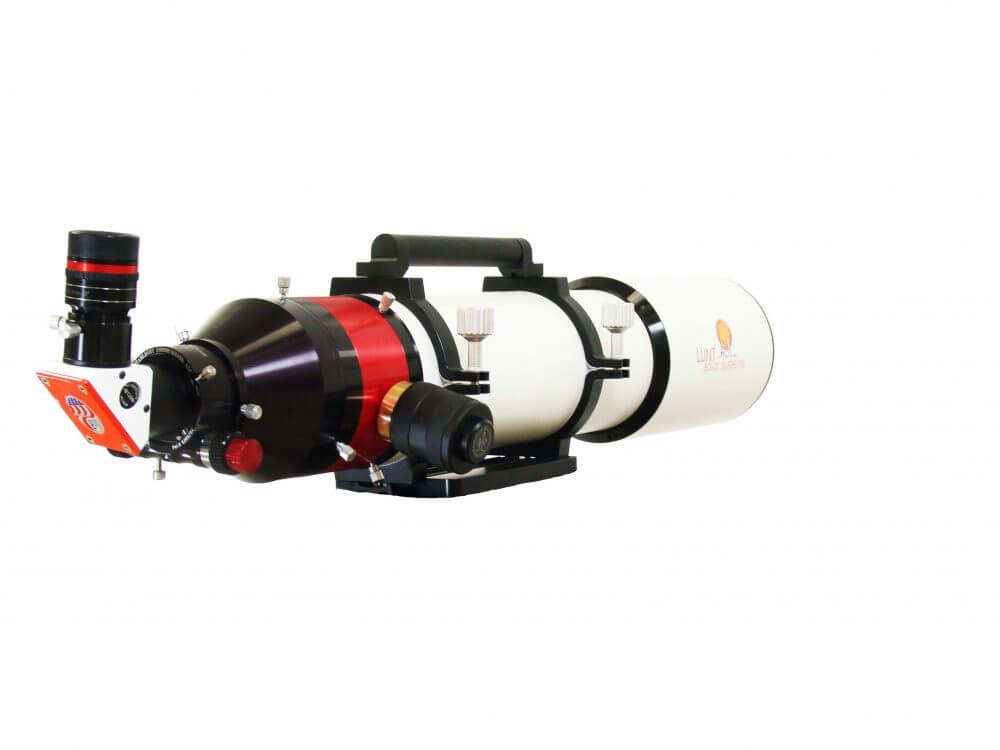
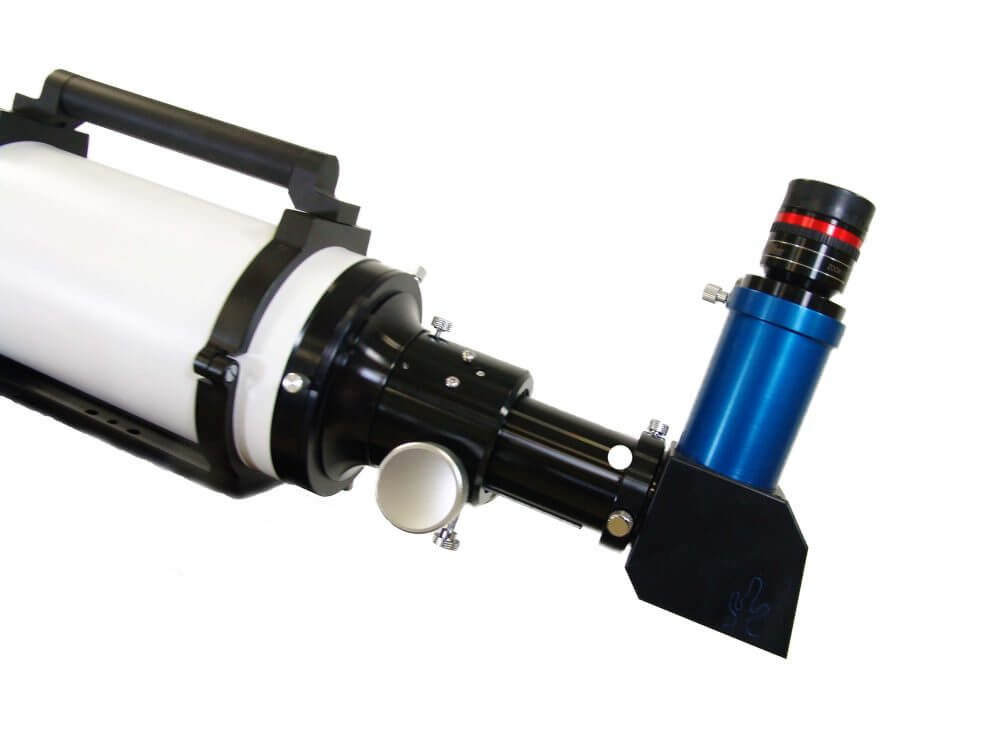
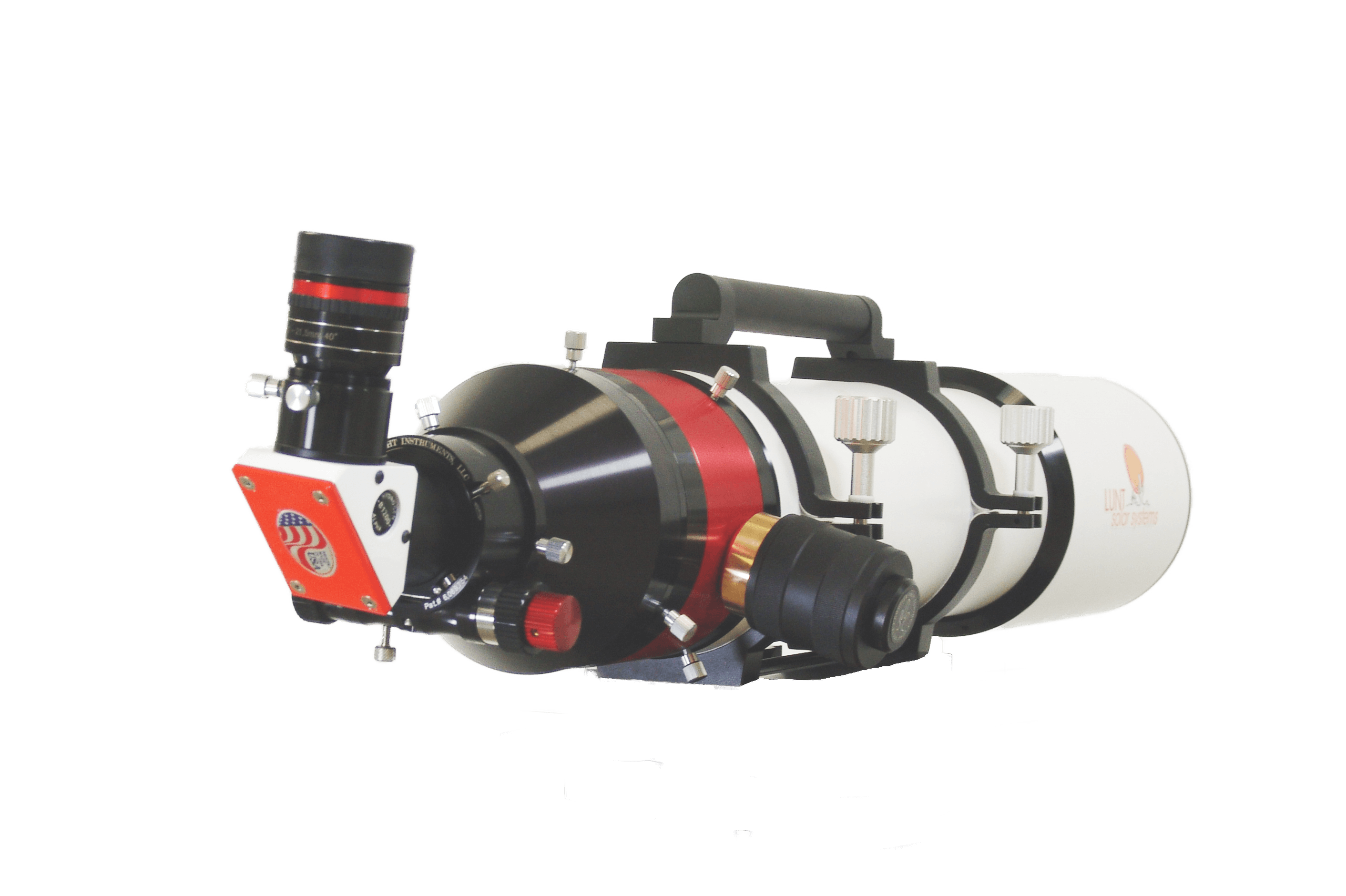
Daniel Beacham –
This review is for the Lunt Day and Night modular 130 mm Refractor:
Love at First Light!
TLDR version: 6/5 stars. Outstanding. Lunt knocks this one out of the park.
Short version: If I had expectations, they were absolutely shattered. Shipping, technical advice and responsiveness from the manufacturer was prompt and the scope delivered views beyond my best hopes. Easy switching between H alpha and APO triplet refractor functionality has me really excited for night time.
Long version: This first review is going to be about the scope’s performance in hydrogen alpha for solar viewing, since clouds have moved in and thwarted any chance at night time observing. Watch this space (haha) for a review of performance when skies clear and we head out to the dark site.
As a purely visual enthusiast, I have bought and traded my way up in H-alpha since I caught the solar bug during the 2016 transit of Mercury at a public viewing event in Tucson. I started with the 40 mm PST, moved through both tilt and pressure tuned 60 mm scopes to arrive at Lunt’s 80 mm hydrogen scope in 2018. Each step up provided additional levels of detail, and the 80 mm outfitted with the B1200 blocking filter offered the perfect balance of portability, detail of view at magnification, and ease of setup. I’m very active in our club’s outreach activities and the 80 has been an absolute workhorse through many weekends of long lines sharing views of prominences, filaments, the rare sunspot and notably, the chromosphere with the public. Through many comparisons with matched eyepiece and blocking filters, it was most clear that you could easily pick out the chromosphere and fainter proms with the 80 versus the 60, and the increase in detail between the two platforms was an easy motivator that delivered. But for a long time, I have wanted a very special scope that I can take on camping trips and long drives, without having to muscle multiple OTAs and often conflicting mount arrangements. A scope worth splurging on that would let me enjoy views of Sol as well as my favorite DSOs and doublets after dark.
What follows next should be largely obvious, though there is a great deal more to the scope than the views you get when you jump from 80 to 130mm in aperture for hydrogen-alpha. In fact, I’ll only detail here to mention (of course) that views of the sun at this aperture are stunning to say the least; crystal clear at all magnifications. A quiet and otherwise boring solar disc was alive with spicules, granulation and a very active chromosphere, changing minute to minute like distant waves on the horizon, observed from the beach on a stormy day. Constant movement and action. I could see tiny prominences in direct and averted vision that were nonexistent at all etalon positions on my 80 mm. No surprise at such aperture beyond the sublime and unexpected action of our local star at crisp, high magnification. More photons
As for performance, the first thing to call out is the wide and stunning range of views available when using Lunt’s pressure tuner, cast in the comparatively larger chamber of the 130 mm etalon. (I bought a base model, with single etalon) Actuating the tuner through its range of motion, there was a far broader and more subtle range of views available across the solar disc and into some snaky, winding proms not visible in the comparably narrow range of action from the 80 mm. Turning past tiny prominences that took zooming exceptionally well, surface granulations went on and on, and finally I could see two sunspot-less plages emerge, all at 7 mm focal length in a flat and even field of view that had virtually no aberration at the edges. I had to just stare in awe at details I’d only been able to imagine for years.
The telescope construction represents a new level of design, departing the understated elegance of Lunt’s dedicated H alpha scopes for a sleek, finished and decidedly fast looking instrument with those signature red anodized accents. The OTA is of course extra hefty, and you will want a substantial mount to keep steady balance while you observe. My first-gen Half Hitch Alt/Az atop a modified Meade Field Tripod was adequate, but I think I’ll be looking for something a little more beefy. Switching from solar to night time is less than a two minute process, with no tools required and the promise of an exciting night of wide field views and splitting doubles ahead, when skies permit. I’ll be comparing the 130 with my Explore Scientific ED 127 triplet APO, and if the clarity of the optics in H alpha compare even remotely to night time views, I suspect that I’ll have a great deal more to say. Watch this space.
Update: Celestial viewing
TLDR version: Less than two minutes to pull the focuser and I’m looking at flat, wide fields of stars with crisp edges and no chromatic aberration.
Longer version: (Visual only) The celestial performance of the 130mm APO refractor did not disappoint. In fact, handily outperformed my ES 127 CF during an evening of driveway gazing in admittedly suboptimal conditions.
First off, the scope was perfectly collimated, right from the box. Second, the weight drops by about 20-25% when you remove the etalon and Feathertouch focuser to swap in the celestial nosepiece and supplied focuser. Only a slight shift in positioning on the mount easily rebalanced the scope along the Dovetail.
Using my Baader twist lock diagonal to match mirrors and porting the same 5.5mm Explore Scientific EP between the scopes, I split Castor wide enough to drive a truck through using the Lunt. My ES 127 likely needs collimation, as I’m usually able to resolve the two stars readily at a dark site, but last night I could best tell the difference on this relatively tight double, right away.
Widefield views with the ES 30mm were extremely pleasing, again with a flat, even field across the Pleiades and that cool, luxurious blue shining through from the principal stars and no hint of color aberration. I was thankful for the long-throw focuser provided with the Lunt and didn’t need the tube extender required for my ES at those focal lengths. I gazed here for a while before turning to the Almach doublet, where the color contrast of the two stars was vividly apparent, even at moderate magnification with the 9.5mm.
Deteriorating conditions soon drove me back indoors (this is Oregon in spring, after all) but that does highlight a major upside I’ve hinted at a few times with the speed of changing between solar and celestial configurations: we’re often rushing outside for a look when there is a break in the clouds, and having one of two scopes at the ready on the same mount with a minute of tool-free exchange between them is a real motivator when I look outside and then remember that my visual tripod rig is occupied with one or the other scope. Nothing has to be tweaked or fine tuned. The machining is smooth and nearly seamless, and the thumbscrews are all snug and easy to engage or back out. I was on the speculative side of curious when I took the plunge and hit the order button, but you have to hand it to these guys. It really is two outstanding scopes in one! Hats off to the inventors, I’m a happy guy.
Quick note by way of follow up to the follow up- took it out to the dark site with club members to put through the paces and split some more challenging targets in Orion, under steady seeing conditions, using the Explore Scientific 5.5mm wide field eyepiece set into Baader’s click lock mirror diagonal:
Rigel: Check. Easy!
33 Orionis: A pair of stars at 5.5 and 6.7 magnitude, separated by 1.9 arc seconds. Check. Again, Easy!
32 Orionis: A pair of stars at 4.2 and 5.8 magnitude, separated by a snug 1.4 arc seconds. Check. Again, Easy!
Everyone was amazed that the scope was so easily swapped between configurations, all the while maintaining perfect collimation and crispness in the FOV.
Again, great job! I can’t wait to get back under the sun at our outreach events with this thing. Socks will be knocked off, to say the least.